
Many adult males feel frustrated when their hairline starts to recede from the front of their head. One of the main reasons for hair loss is male pattern baldness which starts at the temples and top areas of the head.
Doctors commonly prescribe finasteride as a treatment for this condition. Finasteride is one of the leading hair loss treatments, but it remains unclear if it can restore hair along a receding hairline.
Can finasteride actually regrow a receding hairline? Let’s break it down.
What Is Finasteride?
Finasteride is an FDA-approved oral medication used to treat male pattern baldness and benign prostatic hyperplasia. It works by blocking dihydrotestosterone (DHT), a hormone that causes hair loss and prostate growth.
Finasteride belongs to the drug class of 5-alpha-reductase inhibitors, which prevent testosterone from converting into dihydrotestosterone (DHT), a hormone that shrinks hair follicles in genetically susceptible individuals.
Finasteride is available in two strengths; Propecia (1mg) for hair loss and Proscar (5mg) for prostate problems.
The most popular form is oral, but topical options are also available for those who want to avoid systemic side effects.
How Effective Is Finasteride?
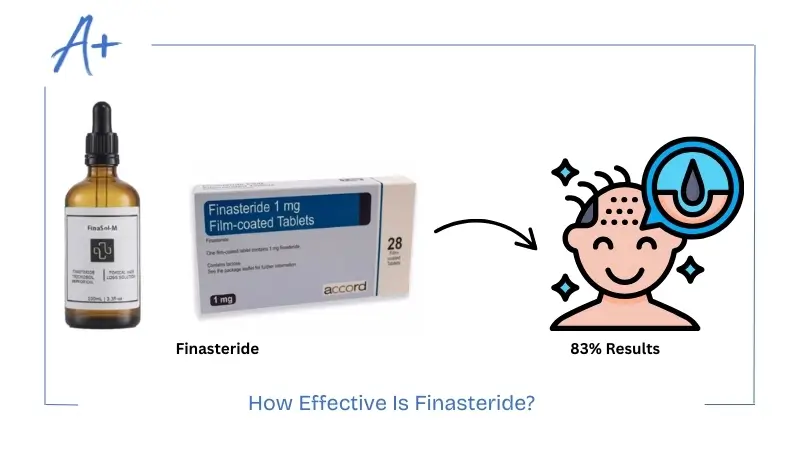
Research shows that finasteride is effective in preventing hair loss. After a year of therapy, around 83% of patients in a large-scale study reported feeling medium to significantly better.
This indicates that finasteride successfully slows or stops hair loss in a large percentage of men and even stimulates new growth.
Additionally, studies show that the finasteride’s effect usually lasts throughout the duration of treatment. According to a follow-up extension study, most men continued to have the same or increased hair density two years after starting the treatment.
The mounting data further establishes finasteride as an essential component in the treatment of male pattern baldness.
Does Finasteride Grow New Hair?
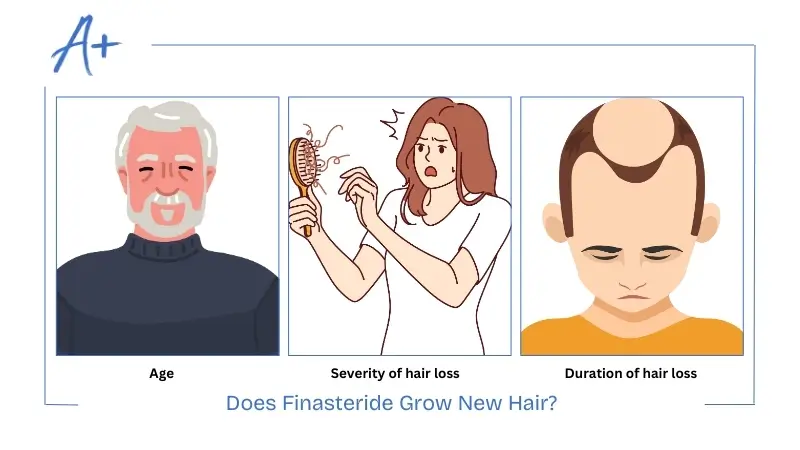
Medical research shows finasteride is effective in treating male pattern baldness. Studies involving 1,553 men with androgenic alopecia demonstrated positive hair regrowth outcomes from finasteride treatment compared to a placebo group.
Finasteride’s success in stimulating hair growth varies depending on the individual and the stage of their hair loss. While it can be effective for both hairline recession and crown thinning, results in the frontal area may be less predictable than in the crown, especially in more advanced cases.
The efficacy of finasteride as a treatment depends on various elements:
-
-
- Age
- Severity of hair loss
- Duration of hair loss
-
To achieve the best outcomes, patients must maintain its regular use for six to twelve months with results typically appearing after a year.
Note:- Finasteride shows no effect on hair loss cases resulting from chemotherapy or autoimmune disorders such as alopecia areata or inadequate nutrition.
How Does Finasteride Work For Hair Loss?
DHT, a hormone originating from testosterone, forms within the testes and adrenal glands. It helps develop masculine traits such as a deeper voice, thicker muscles, and more facial hair.
People with androgenic alopecia (male pattern baldness or female pattern baldness) experience hair follicle shrinkage and hair cessation due to excessive DHT production.
Finasteride reduces DHT levels on the scalp by 60 -70%, which controls hair loss while it can lead to new hair development. Here’s how it works:
-
-
- Prevents Hair Loss: By decreasing DHT levels, finasteride protects hair follicles from shrinkage, maintaining current hair volume.
- Stimulates Regrowth: The hair restoration process regenerates certain resting follicles, which produces thicker hair strands often at the crown.
- Improves Hair Density: The strength of hair shafts grows throughout time, which creates an appearance of fullness.
-
When Will Finasteride Show Results?
The U.S. National Library of Medicine (NLM) estimates that more than half of all males aged 50 will have some degree of male pattern baldness. Most men experience different results but commonly observe these effects:
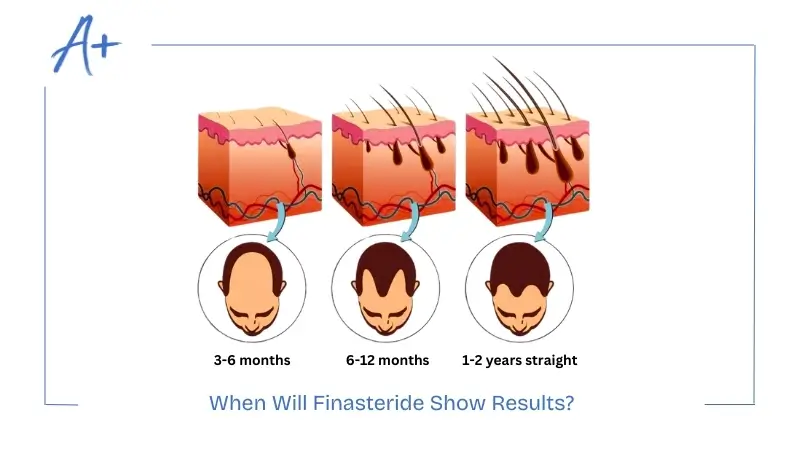
-
-
- Reduced shedding within 3-6 months
- Visible improvements in thickness by 6-12 months
- Best results after using the medication for 1-2 years straight
-
Note:- The medication works best when hair loss duration matches follicle damage severity.
Can Finasteride Stop A Receding Hairline?
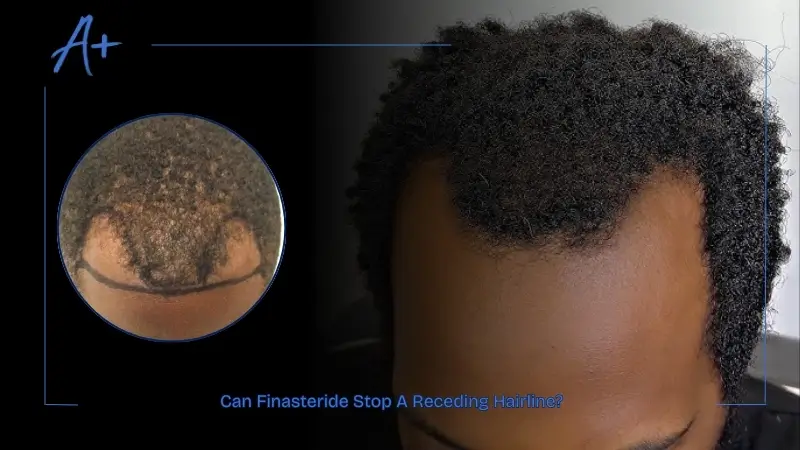
Finasteride can stop hairline recession in men with androgenetic alopecia (male pattern hair loss), which maintains hair loss prevention while using the drug.
It is often recommended following hair transplant surgeries to preserve restored hair density and prevent additional hair loss.
Research shows it produces hair retention in 44.4% of patients with different hairline recession patterns alongside 61.2% success with frontal hair loss cases. After one year of use, finasteride stops frontal hair loss in 70% of male users.
Men who used finasteride maintained their hair, whereas those with frontal and crown balding patterns did not.
When Should You Take Finasteride?
If you’re experiencing hair loss, your doctor may recommend taking 1 mg of finasteride daily. If you want to keep your DHT levels steady, take it regularly. Finasteride can be taken with or without food.
Do not exceed the prescribed amount, as overdosing does not improve effectiveness and may increase negative effects. For safe and successful outcomes, it is vital to comply with medical instructions.
Does Finasteride Work for All?
Finasteride affects people differently. Factors influencing effectiveness include:
- Genetic factors causing enhanced sensitivity to DHT-blocking substances.
- Initiating treatment during early stages yields more successful results.
- Skipping doses reduces effectiveness.
The medication produces noticeable hair regrowth for 10-15% of users, although most experience halted or decreased hair loss. Some users see minimal changes.
What Are Finasteride Side Effects?
Finasteride, like any medicine, may have side effects though not experienced by all. Possible side effects include:
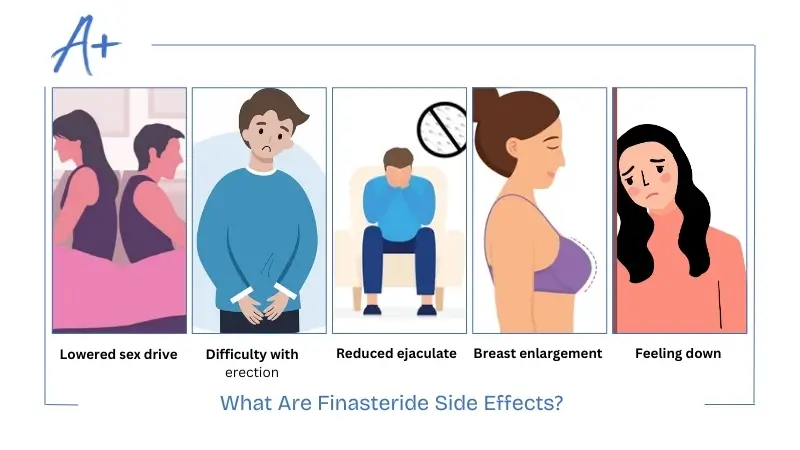
- Lowered sex drive
- Difficulty with erection
- Reduced ejaculate
- Breast enlargement or tenderness
- Feeling down or depressed
Consult your doctor for information regarding potential side effects. Most side effects resolve after stopping the medicine, although persistent sexual side effects have been reported by some users.
What To Know Before Taking Finasteride?
Before starting finasteride treatment for a receding hairline, consider these points:
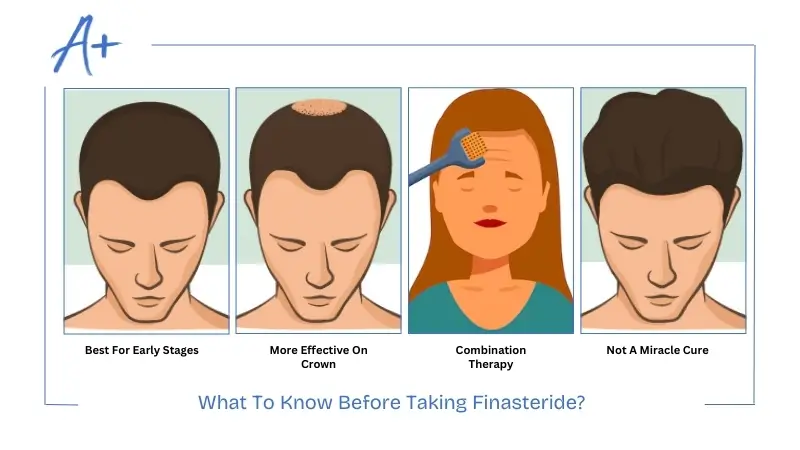
- Best For Early Stages: Finasteride works best before hair thinning becomes substantial.
- More Effective On Crown: Results for temples and hairlines may take longer than other affected areas.
- Combination Therapy Helps: Using minoxidil and derma rolling systems alongside finasteride create better results.
- Not A Miracle Cure: A severely receded hairline may not fully recover with this medication.
What Are Alternatives To Finasteride?
As a major medical solution for male pattern baldness, patients have alternative treatment options, including:
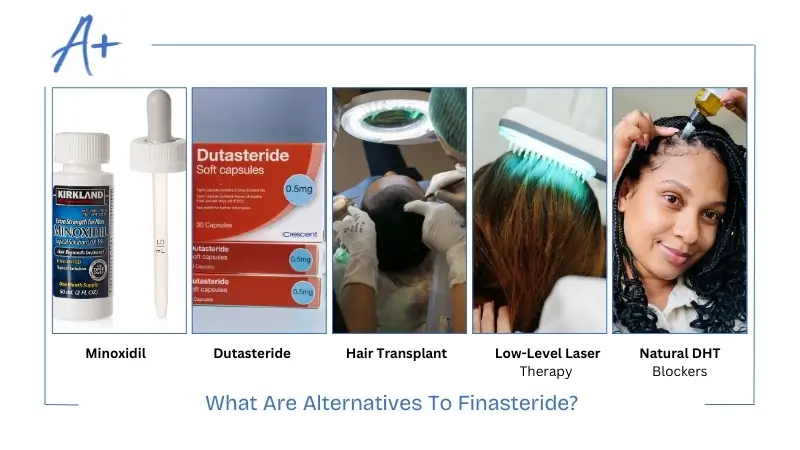
- Minoxidil: A foam or liquid applied to the scalp to stimulate hair growth by enhancing blood circulation towards the hair follicles.
- Dutasteride: Similar to finasteride, it lowers DHT levels but is potentially more potent. It is not authorized for hair loss treatment across all regions.
- Hair Transplant: A surgical procedure where hair follicles are transferred from areas of healthy hair growth to balding areas.
- Low-Level Laser Therapy (LLLT): A red light laser system applied to the scalp to enhance hair growth.
- Natural DHT Blockers: Some natural supplements and oils may block DHT, though scientific evidence for these solutions is limited.
Myths & Misconceptions About Finasteride
Some misconceptions about finasteride persist despite its growing popularity. A typical misunderstanding is that finasteride would magically solve all of your hair loss problems.
These factors might cause you to have unreasonable expectations. Results might vary, even though many people report benefits.
Another misconception is that finasteride only helps older men with severe hair loss. In reality, it is effective for younger men with thinning hair as well.
Individuals may better prepare themselves for the hair restoration process by learning about the facts about finasteride.
Frequently Asked Questions
Can finasteride regrow hair by itself?
Yes. Finasteride can induce hair regrowth and slow down hair loss. However, the success of hair growth depends on the location of hair loss on the scalp.
Does finasteride work on a bald head?
Finasteride can slow down hair loss and encourage regeneration in areas of the scalp with active hair follicles, even in severe baldness.
Does finasteride thicken up the hairline?
Finasteride can assist in thickening the hairline, especially when paired with other treatments or started early. However, it is generally more effective for crown hair loss.
Why do men not take finasteride?
Typical adverse effects from finasteride are lower sex drive and erectile problems. Additionally probable are low blood pressure, masculine enlarged breasts, and depression.
Can finasteride regrow dead hair follicles?
Finasteride cannot regrow hair from completely dead follicles. It works by suppressing DHT, which shrinks hair follicles, but it does not revive follicles that have stopped producing hair.

